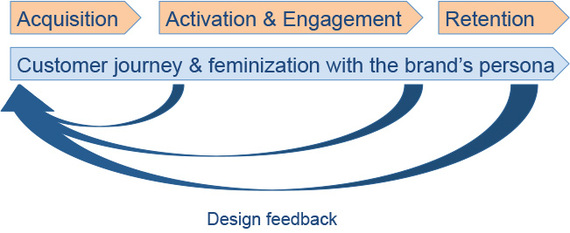Co-written by Cade Witnish
Building a startup on a shoestring budget is possible up to the point when the first innovator and early adopter users have signed on and been identified. Then, the nascent firm needs to quickly scale up it's offering while creating a niche market and acquiring early majority customers. This is also the step in the process when serious risk capital is needed because it requires concurrent engineering development, manufacturing and marketing of the product. Might upfront imaginative coordination of design and marketing ease this critical transition?
Good design has been shown in studies at Stanford University and Hanyang University in Seoul, South Korea, to increase investors' interest and valuation of new business opportunities. At the same time, superior design has been shown in Stanford University studies to create trends by fostering online buzz, as measured by the number of Web Citations commanded. So, if design can entice investors and customers alike -- how might marketing be used to systematically make this happen?
The first question to ask is, does the startup's personality shine through its design? People still do business with other people and despite the advances in technology, the most successful startups are those that can create and maintain a human connection with their target customers.
The first interaction a potential customer has with a new business establishes how they perceive the startup's persona. Consistent design is a critical component for ensuring that the persona initially established is portrayed throughout the life cycle of the startup.
Below are the four key stages to a customer life cycle and the focused steps a startup must take when considering design.
Acquisition
Acquisition focuses on all tasks and activities related to acquiring potential customers prior to them becoming a customer, whether this is through paid advertising, social media or search engine optimization.
Applying a company persona to these elements helps to differentiate their acquisition materials from those of competitors. It helps to communicate not only value proposition and price but also the personality of the business and product, which, on a human level, is how people ultimately relate.
Activation and Engagement
Potential customers have arrived on the new website and the offerings there have piqued their interest. Now, they need to quickly understand what action to take. Through design, the user is guided through not only the product offering, but through the product activation process.
When visitors reach the startup's website, ensure that the same emotions are invoked as during the acquisition stage. By having consistency in communicating the startup's persona at all stages, chances are greatly increased for retaining the engagement of these visitors -- as they will be connected emotionally to the brand throughout the journey.
Retention
When activating -- communicate the value proposition message to customers and get them to take action. In the retention stage, encourage them to repeat their initial action (e.g. a purchase) or take different, further actions to re-engage. Therefore, the design of the materials you use to re-engage must not be overlooked.
To keep people coming back, continue to portray the same persona that attracted them in the first place. Ensure that consistent messaging and personality shines through the startup's design and while no business retains every customer, a consistent persona will attract many more repeat visitors.
What next?
Get personal. Step back and take a look at your new startup -- whether it's still an idea or is a bit more established -- and ask, -- if your business were a person, what type of person would it be? Are you happy with that persona? And is that persona -- along with your values -- reflected in every stage of messaging that is displayed to your potential and current customers? If not, you may be missing out on many potentially lucrative business opportunities.
Special thanks to Cade Witnish for researching and co-writing this article.
